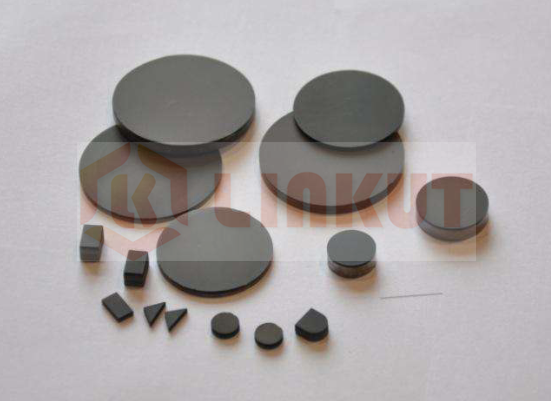How to use PCBN Inserts Reasonably?
Due to the excellent cutting performance of PCBN inserts materials, it is particularly suitable for processing hardened steels with hardness>HRC45, wear-resistant cast
iron, heat-resistant alloys>HRC35, and pearlite gray cast iron<HRC30 but other inserts are difficult to process.
In order to give full play to the superiority of cbn turning inserts and obtain satisfactory processing results, in actual use, in addition to referring to the cutting parameters
selected by cbn cutting inserts, it should also be considered and reasonably selected according to the specific conditions of the machine tool, workpiece and other relevant
conditions.
1) During hard turning, the radial force is very large, which requires a large power of the machine tool and a good rigidity of the machine tool system. This can protect the PCBN
tools and achieve satisfactory processing results. When clamping a PCBN tool, the overhang of the tool should be as short as possible to prevent the tool holder from chattering
and deforming, so that the PCBN tool can maintain a good processing state.
2) The strength of PCBN tools is lower than that of hard alloy tools. Therefore, in hard cutting, negative rake angle, large rake angle and negative chamfer are generally used.
This is not only conducive to strengthening the cutting edge, but also have good abrasion resistance. Usually, the size of negative chamfer is (0.1 ~ 0.5) × (10 ° ~ 30 °). The effect
will be better if the chamfer is properly honed. In addition, wherever possible, use small primary clerance angles and large tool corner radius as much as possible, which helps protect
the cutting edge and prolong the service life of the tool.
3) In order to use PCBN tools well, to stably control the quality of the workpiece, it is important to accurately judge the durability of PCBN tools. If you have been using a tool that has
become very worn, then the cutting force and cutting temperature increase, cutting is not smooth, it is difficult to control the size and surface integrity of the workpiece, and even the
PCBN tool can not continue to grind and scrap. In order to ensure the normal use of the tool, it is recommended that the abrasiveness of the flank of the PCBN tool should be 0.3 to
0.6 mm (small value when finishing).
4) For workpieces with high hardness and irregularities, PCBN inserts are fragile and afraid of impact. Cut-in and cut-out from the end surface of the workpiece, especially when there
are slag inclusions, trachoma, and unevenness on the surface, the impact is the most likely to cause the cutting edge to rupture and reduce the durability. Therefore, before using the
PCBN tool, it is best to turn the cold hard layer once and chamfer the cut-in and cut-out ends of the workpiece to reduce the PCBN tool impact force.
5) PCBN tools are not suitable for processing softer ferrous materials.
6) To determine cutting speed, feed rate and cutting depth, comprehensive consideration should be given to production efficiency and processing cost. Generally speaking, its cutting
speed can be about 2 times higher than that of cemented carbide tools. High cutting speed generates large cutting heat, which increases the plasticity of the material being processed,
which is conducive to controlling chipping and reducing cutting forces.
7) When using PCBN tools, cooling fluid can be added or not. When using cooling fluid, it must be fully cooled.
No matter for the high chromium materials machining, wear resistant cast iron machining or hardened steel materials etc machining, we could supply the constructive suggestions and solutions.
Previous Article:The Characteristics of LINKUT CBN Inserts for Brake Drum Machining
Next Article: The Features of PDC Oil Drill Bits







